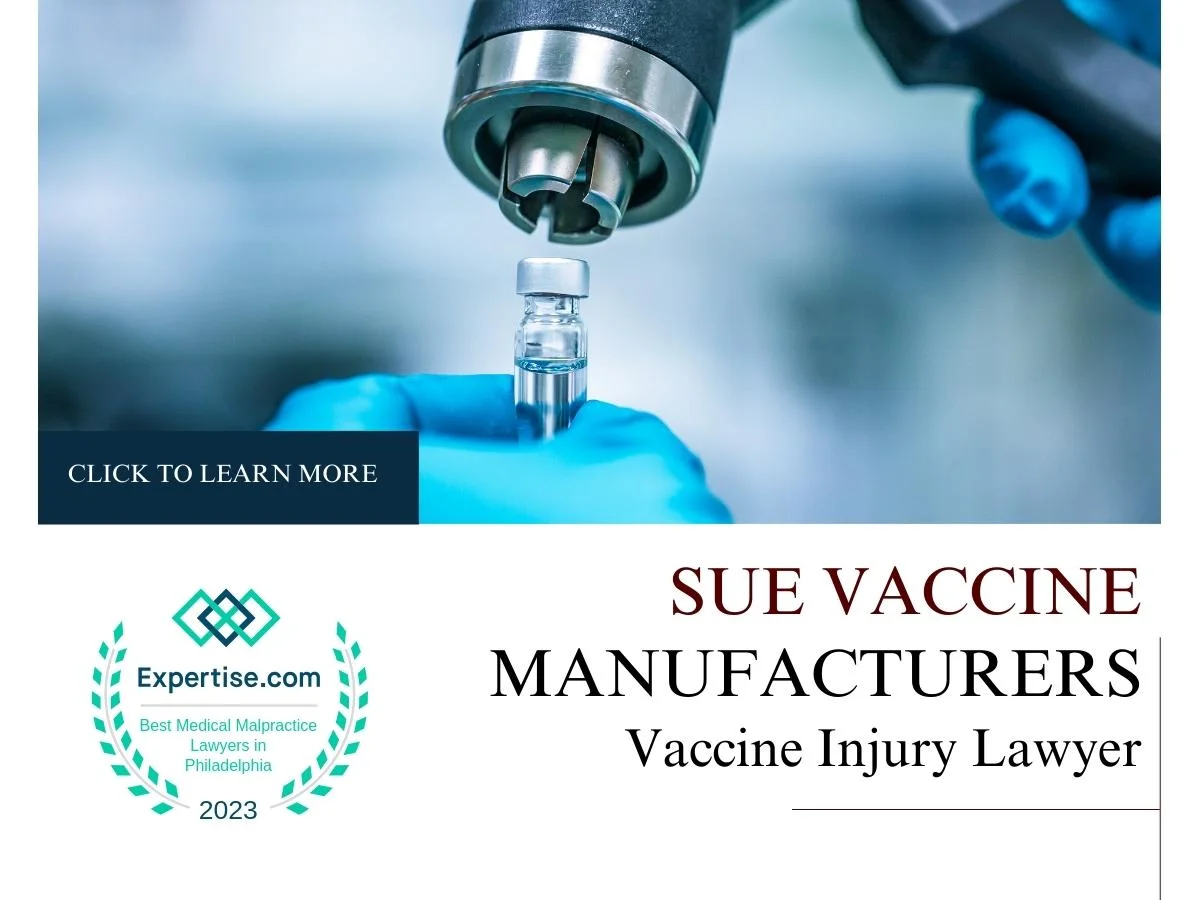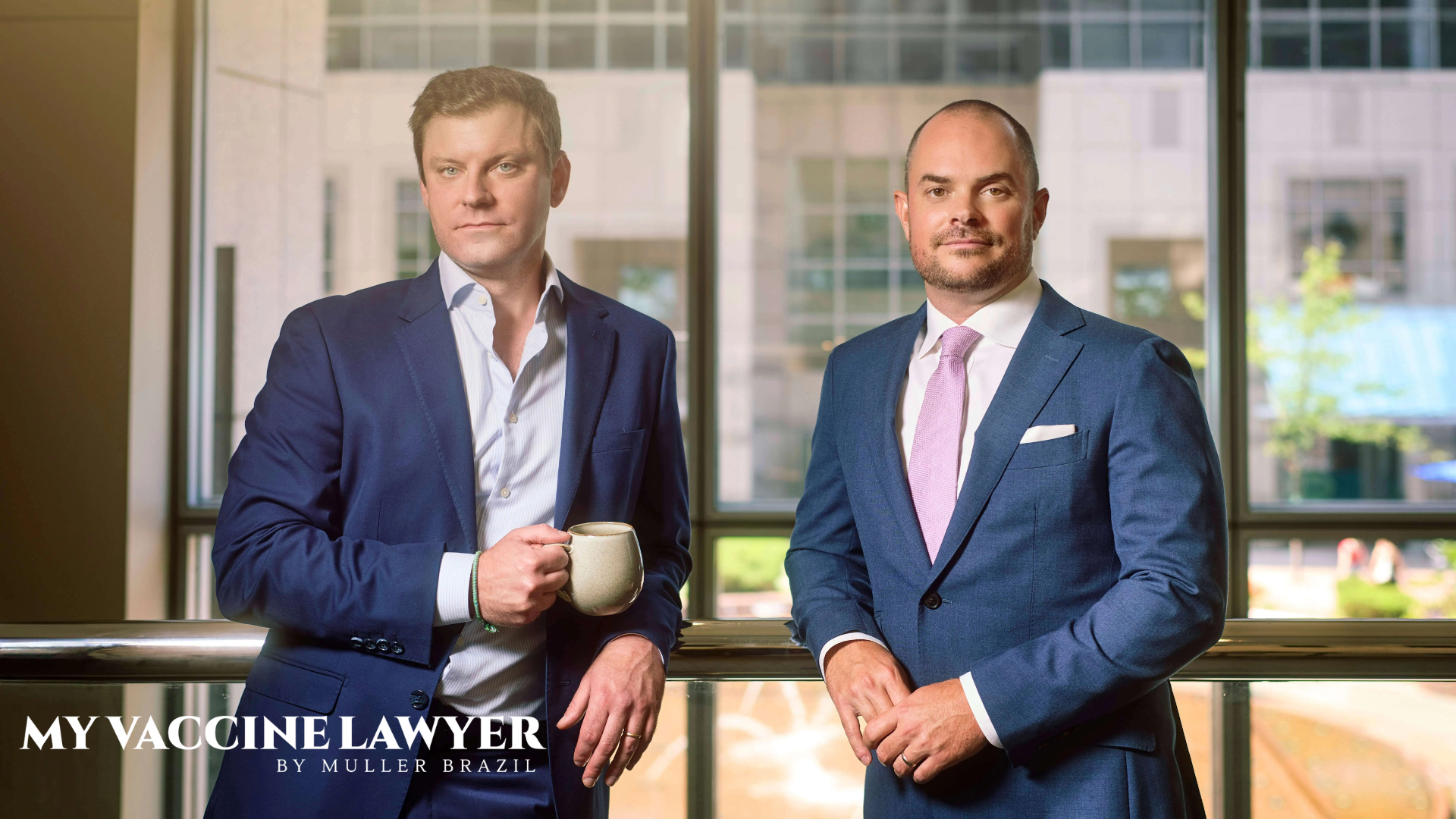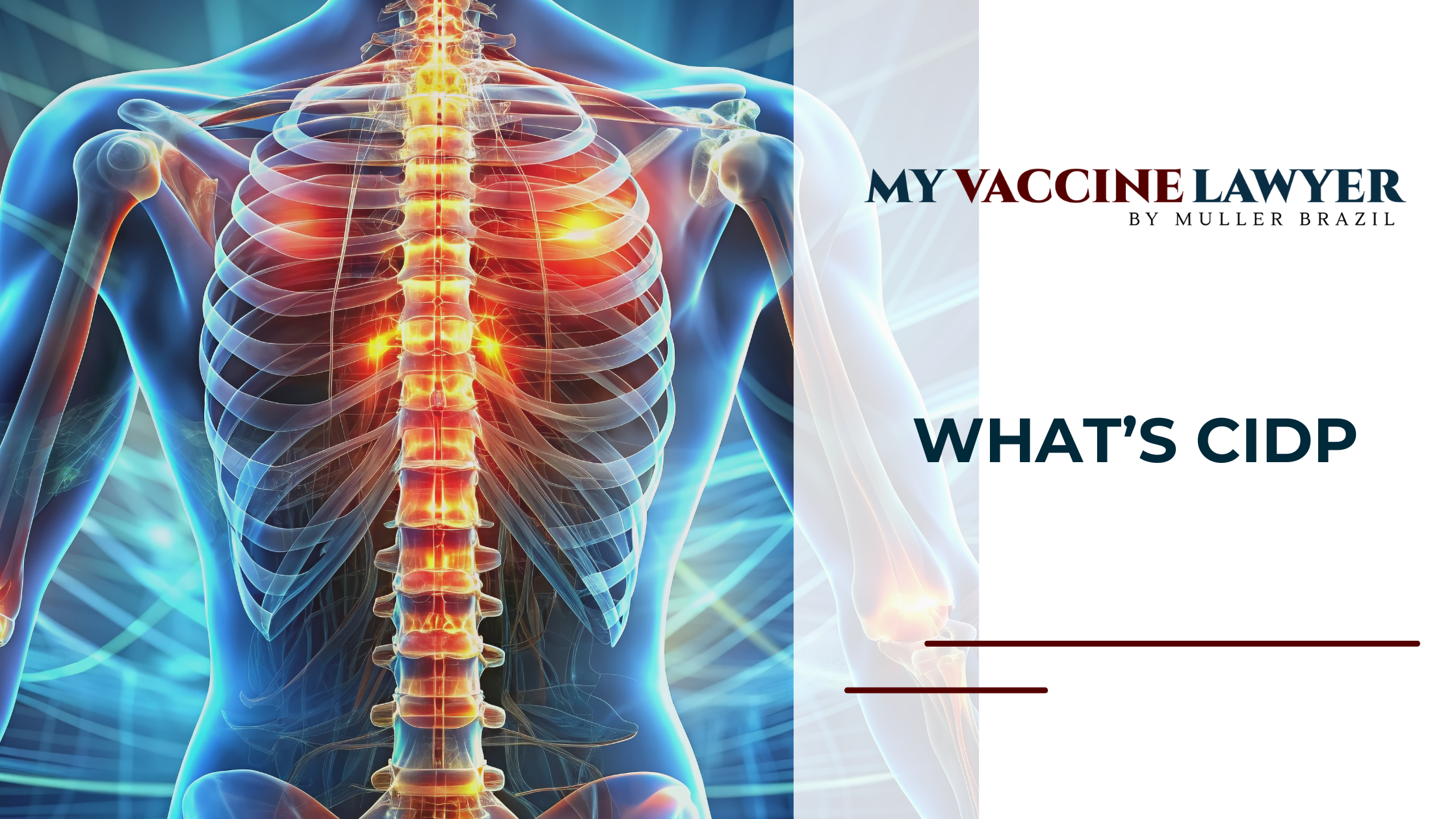Can You Sue a Vaccine Company or Manufacturer?
When vaccine injury strikes, justice starts with the programs built to pay claims, not vaccine manufacturers
7 min read
Vaccine Injury Law Resources / Max Muller / Frozen Shoulder After Vaccine
 Max Muller
:
Nov 5, 2025 9:17:00 AM
Max Muller
:
Nov 5, 2025 9:17:00 AM
Frozen shoulder after vaccine claims are rising, and so are settlement values. Clients presenting with painful shoulder stiffness, reduced range of motion, and imaging that shows adhesive capsulitis often recover substantial sums, often 6 figures, through the Vaccine Injury Compensation Program.
Each frozen shoulder diagnosis requires precise correlation to the vaccination record, the affected shoulder, and the medical findings that demonstrate limitation of the shoulder joint capsule. Most patients develop frozen shoulder following injection into the deltoid muscle, where the vaccine needle may trigger a local inflammatory response. That inflammation progresses into significant shoulder stiffness, limiting both internal rotation and external rotation. When the clinical history confirms onset in the same shoulder used for vaccination, and a normal shoulder radiograph rules out other pathology, the claim becomes stronger.
The government recognizes shoulder injury related to vaccine administration (SIRVA) on the Vaccine Injury Table. Cases that fall outside that framework, including idiopathic frozen shoulder or primary frozen shoulder developing after influenza vaccination, still succeed when the evidence supports causation. For such patients, expert legal representation determines whether a shoulder injury related to vaccine administration converts into a high-value settlement.
Take Control of Your Injury Today
A frozen shoulder after vaccine is treated very differently from a classic SIRVA claim under the Vaccine Injury Compensation Program. Each case depends on how healthcare professionals describe the injury, the diagnostic findings, and the language used in the medical record. Precision in that wording changes whether causation is presumed or must be proven.
Key diagnostic distinctions
SIRVA (Shoulder Injury Related to Vaccine Administration): immediate shoulder pain and restricted shoulder range of motion (ROM) within forty-eight hours of vaccine administration, usually following influenza vaccination or tetanus vaccines.
Frozen shoulder (adhesive capsulitis): gradual loss of mobility, painful shoulder stiffness, and imaging that reveals thickening of the shoulder capsule and limitation of both internal rotation and external rotation.
Primary frozen shoulder or idiopathic frozen shoulder: occurs without trauma, but when such patients develop a frozen shoulder in the same shoulder used for injection, it may still qualify as an injury related to vaccine administration.
Magnetic resonance imaging gives doctors the clearest view of how adhesive capsulitis develops. It often shows a tightened shoulder joint capsule and mild inflammation around the deltoid muscle vasculature. When clinicians measure active shoulder elevation, they look for how far the arm lifts before pain starts. A noticeable drop in active and passive elevation, paired with consistent pain scores, confirms that the problem is more than soreness. These medical results establish a vaccine related shoulder dysfunction rather than a short-term reaction.
When diagnosing frozen shoulder, an attorney examines every clinical history note for timing, documentation of mild pain or moderate symptoms, and evidence of progression toward severe pain or severe limitations. A case that begins with injection site pain in the upper arm and evolves into significant shoulder stiffness for more than a year demonstrates the path of a full blown frozen shoulder.
A strong record shows a clear medical pathway:
vaccine administration → local inflammatory response → restricted shoulder ROM → adhesive capsulitis confirmed on imaging.
That sequence differentiates legitimate vaccine related injuries from unrelated shoulder disorders. Each element, when organized with expert testimony, positions the claim for higher compensation and recognition under the Vaccine Injury Compensation Program.
A frozen shoulder after vaccine administration may qualify as a Table injury when the record shows shoulder symptoms beginning quickly after the injection. Under the Vaccine Injury Compensation Program, these shoulder injuries related to vaccine administration (SIRVA) cases benefit from a presumption of causation. That means once the criteria are met, the government accepts the connection without additional expert testimony.
Timing proof: medical records confirming shoulder pain or stiffness within forty-eight hours of the vaccine.
Eligible vaccine: commonly influenza vaccination or tetanus vaccines, both listed on the official Table.
Diagnostic evidence: a normal shoulder radiograph showing no pre-existing shoulder pain or degenerative disease.
Functional data: verified loss of shoulder ROM measured by healthcare professionals in early visits.
Documentation consistency: clinical notes and follow up entries that match the same shoulder used for vaccine administration.
When those records exist, the claim moves directly toward settlement. Presentation follow up duration and therapy notes confirm that the shoulder injury related to vaccine administration created measurable limitations. Compensation then reflects the duration of limitation, the pain scores recorded, and any necessary shoulder steroid injection or physical therapy.
Federal data show that most shoulder injury related claims resolved under the Table achieve higher settlements with less delay. These cases cover medical expenses, therapy costs, and lost income in addition to compensation for pain and restricted function. Because the Vaccine Injury Compensation Program pays attorney fees separately, the full award remains with the claimant.
Each compliant record shortens the timeline between filing and resolution. A clean proof chain: vaccination, immediate shoulder stiffness, consistent documentation, confirmed limitation, presents no ambiguity. That structure positions the claim for fast acceptance and full recognition under federal guidelines, avoiding disputes about causation that slow off-table cases.
Take Control of Your Injury Today
An off-table frozen shoulder after vaccine requires direct proof that the injection caused the condition. Without the Table’s presumption, evidence becomes the case. The Vaccine Injury Compensation Program still allows recovery, but the proof sequence must be airtight.
Each step needs medical documentation. Magnetic resonance imaging often provides the most persuasive evidence, revealing subtle thickening of the shoulder capsule and restricted shoulder ROM. Clinical notes trace the inflammation from the deltoid muscle to the upper arm and the surrounding distance tissues. That local reaction supports the argument that the vaccine needle triggered a full-blown frozen shoulder rather than a coincidental strain.
Expert witnesses rely on follow up data, presentation follow up duration, and pain scores to show that the pattern matches a vaccine related shoulder dysfunction. Healthcare professionals link the restricted motion to the injection event, ruling out pre existing shoulder pain or unrelated trauma. When that connection is recorded clearly, the claim gains strength even without Table status.
Federal attorneys often assess average age, clinical history, and consequent adverse reactions to verify that the course of recovery aligns with known vaccine related injuries. In these cases, further research into inflammation pathways helps explain how a small injection can create such significant shoulder stiffness. A clear report describing the affected shoulder, the timeline of symptoms, and the measurable range of motion loss becomes the decisive factor.
When all elements align, the result is compensation on par with Table outcomes. The process takes longer, but the final award reflects the proven medical truth of a vaccine related injury.
Settlements for frozen shoulder after vaccine claims are trackable and measurable. Public decisions and firm reports under the Vaccine Injury Compensation Program show tight clusters for SIRVA and higher awards when limitation lasts longer.

My Vaccine Lawyer negotiated a flu-shot frozen shoulder result at $106,160, with documented adhesive capsulitis and treatment escalation! See our other notable settlements.
Measured loss of range of motion (ROM) across visits signals severity. Longer presentation follow up duration and consistent pain scores document the impact on the shoulder joint and daily function. Courts also credit clean records that tie symptoms to the same shoulder as vaccine administration and rule out pre existing shoulder pain.
Costs make a differece. Documented medical expenses, therapy frequency, and time away from work are added to pain-and-suffering in total awards, which explains totals above the pain-and-suffering figure alone. Program wide, HRSA confirms large volumes of negotiated settlements and fee payments, which is consistent with the outcomes seen in vaccine related injuries of the shoulder.
Bottom line for valuation: verified clusters exist from the mid-$90k range into the low six figures, and documented upper-band SIRVA decisions show $130,000 pain-and-suffering with additional expenses on top. Strong, repeated measurements of shoulder range, precise clinical notes, and credible imaging keep a frozen shoulder diagnosis in the higher bands.
Take Control of Your Injury Today
Frozen shoulder after vaccine claims succeed on precision. Without complete documentation and expert legal handling, real money is left on the table.
A review of published Vaccine Injury Compensation Program decisions shows that incomplete claims settle for 30–50% less than fully developed ones. In several SIRVA cases, petitioners who filed without counsel accepted settlements in the $40,000–$70,000 range. Comparable cases represented by experienced attorneys with verified magnetic resonance imaging, consistent follow up, and full therapy notes recovered $110,000–$150,000. That difference equals more than a year of medical bills, lost income, and recovery time.
Missing early notes: when healthcare professionals fail to record painful stiffness or range-of-motion loss in the affected shoulder, the injury appears mild.
No imaging: absence of scans showing adhesive capsulitis or a tightened shoulder joint capsule lowers credibility and limits payout.
Interrupted presentation follow up duration: long gaps between visits allow the government to argue recovery occurred earlier than claimed.
Unverified treatment: missing logs for physical therapy or shoulder steroid injection cut thousands from documented medical expenses.
An attorney directs medical documentation before it’s too late to strengthen proof. During the initial consultation, a qualified firm outlines which providers must capture active shoulder elevation, record pain scores, and describe the shoulder stiffness progression. Each of those entries translates directly into compensable evidence.
Vaccine injury attorneys also argue valuation. In VICP decisions, expert representation routinely raises the pain-and-suffering award by $25,000–$50,000 simply by linking every symptom and treatment note to the vaccine event. Unrepresented petitioners rarely achieve that precision.
For patients presenting with adhesive capsulitis or full-blown frozen shoulder, the financial gap between minimal and expert-handled cases is substantial. A single error in record-keeping or an unclear diagnosis erases tens of thousands of dollars in compensation. With legal guidance, those same records become the foundation for a top-band settlement.
Our attorneys at My Vaccine Lawyer handle every Vaccine Injury Compensation Program case with the precision of a federal claim and the attention of a personal injury suit. The firm’s team of litigators and paralegals focus exclusively on vaccine related injuries, managing each step from medical review to petition filing and negotiation. We’ve secured millions in awards for clients suffering from frozen shoulder after vaccine administration, adhesive capsulitis, and other SIRVA claims nationwide.
Each case begins with a free initial consultation. During that review, attorneys collect vaccination records, imaging, and clinical notes that confirm painful stiffness, reduced shoulder range of motion, or long-term limitation in the affected shoulder. We coordinate directly with healthcare professionals to ensure the diagnosis and follow up documentation meet the evidentiary standards of the Program.
You don’t need to assemble complex records or argue causation alone. The team builds the proof chain, manages every filing, and prepares expert reports that demonstrate the medical and financial impact of your injury.
Contact My Vaccine Lawyer to start your claim or schedule a free consultation:
Location: 715 Twining Road, Suite 208B, Dresher, PA 19025
Tel: (800) 229-7704
Email: info@myvaccinelawyer.com
Your records already hold the proof. With experienced representation, they become compensation.
Take Control of Your Injury Today
Mr. Muller currently devotes the majority of his law practice to aggressively fighting for the victims of unsafe drug and medical device injuries, as well as vaccine injuries and vaccine reactions involving the flu shot, TDaP/DTaP vaccine, and more. He has handled hundreds of SIRVA injury cases (shoulder injury related to vaccine administration), especially those involving bursitis, tendonitis, frozen shoulder, and rotator cuff tears. Mr. Muller also handles cases where vaccines caused serious nerve injuries such as Guillain-Barre Syndrome. Mr. Muller has recovered millions of dollars in compensation for his clients in the Vaccine Injury Compensation Program.

When vaccine injury strikes, justice starts with the programs built to pay claims, not vaccine manufacturers

Attorney Max Muller was retained by a woman who suffered a shoulder injury following a flu shot and pneumonia vaccine. Immediately following the...

Living with Chronic Inflammatory Demyelinating Polyneuropathy (CIDP), a rare autoimmune disorder, can be life-altering.
